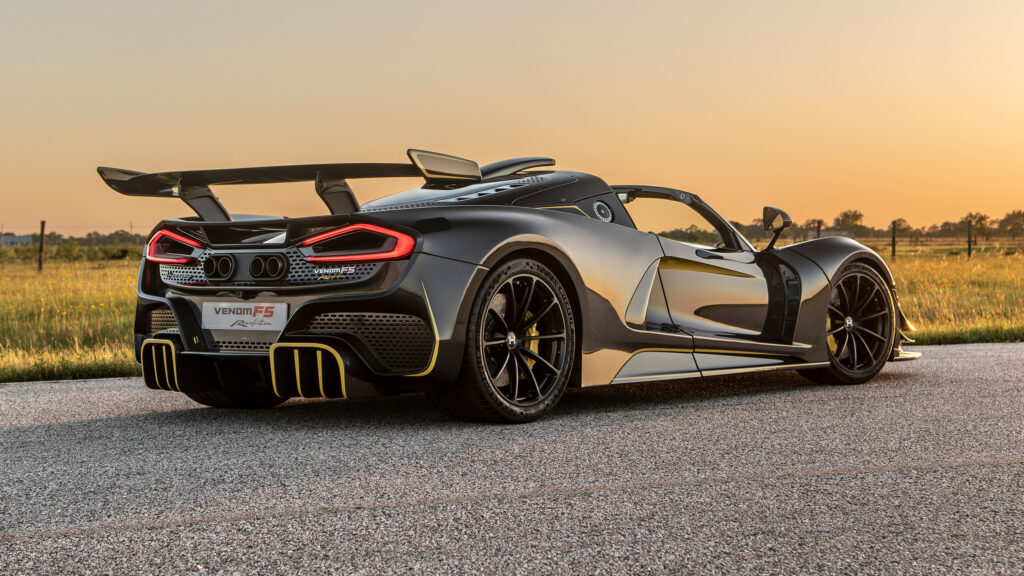Hennessey is your speed-dial outfit for those times when more than enough simply isn’t enough. No sooner has one of the Detroit Big Three brands released a new performance car that seems to tick every box and then some, than Hennessey has made it look faster and go harder.
But even crazier than the Camaros and Mustang with four-figure power outputs and 6×6 truck conversion are the firm’s Venom hypercars and its nutty plan to build a six-wheel-drive EV shaped like an armadillo. Just how much wilder can Hennessey get this year? We hooked up with the brand’s design director, Nathan Malinick, to find out what makes Hennessey tick and where the company is heading.
Small team, fast reactions
Related: Hennessey Takes Cadillac Escalade-V Over The Top With 1,005 HP Tuning Package
A California native, Malinick took on a full-time role at Hennessey six years ago, and is one of only two full-time members of a team that sometimes swells to five when extra help is needed. He works across both sides of the business, some hours on the Hennessy Performance tuning arm’s products, and a lot more on the Hennessey Special Vehicles hypercar division, including helping customers spec their cars, though the creative opportunities each job offers is radically different.
The tuning department can react quickly to the launch of a new car, potentially getting a visual upgrade package ready in a couple of weeks, Malinick says, and moves just as fast with performance upgrades if it already has experience with the same powertrain in other applications. But creating a $2 million track weapon like the Venom F5 is an altogether bigger undertaking. That’s why the company’s business plan stretches to 2040, and allows it to dream up cars that might seem like pure flights of fancy today, such Project Deep Space.
Project Deep Space is in the deep freeze
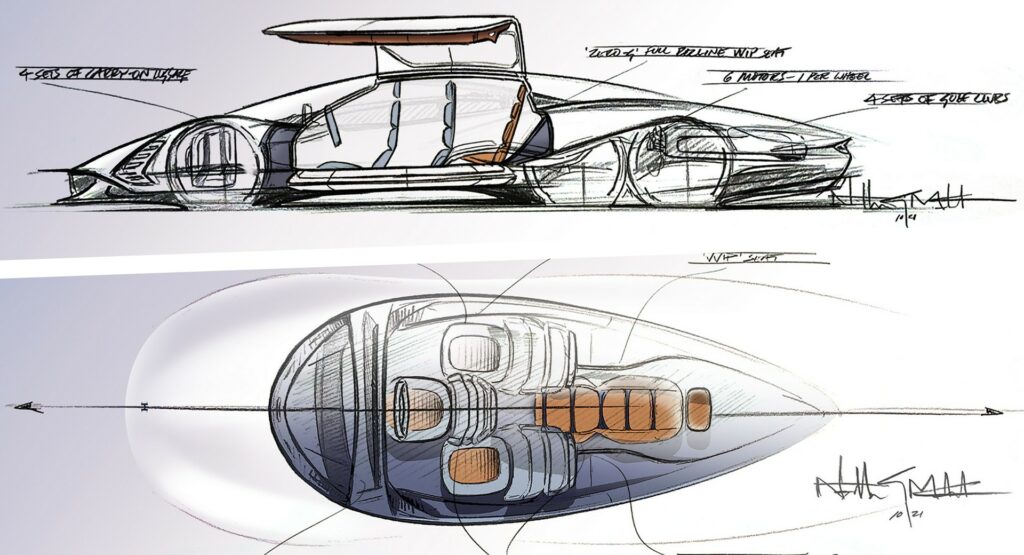
Hennessey has created some outrageous machines over the years but none of them raised eyebrows quite like Project Deep Space, which the brand unveiled in a series of sketches in 2021. Billed as ‘the world’s first six-wheel drive Hyper GT’ it featured gullwing doors, four seats laid out in a diamond pattern, and would be priced from $3 million and delivered in 2026, the company claimed. Unfortunately, if rather unsurprisingly, that target is now consigned to the trash.
“It’s very much still in the product plan for us,” Malinick assures us. “However, it has been, let’s say it’s been pushed. We started to go to all of our our dealers and our customers and we were showing them the car and they they just were blown away by the design and were very, very interested. But we just kept hearing that what people really wanted was not necessarily an EV from us right now. What we kept hearing was ‘we love it, but not right now.’”
Those same customers told Hennessey that they were still in love with combustion power, and were looking more for a pure driver’s car. Something more like the Venom F5, although Hennessey has plans to shake up that side of the business, too.
“We won’t follow the F5 up with an F6 that’ll do 400 mph”
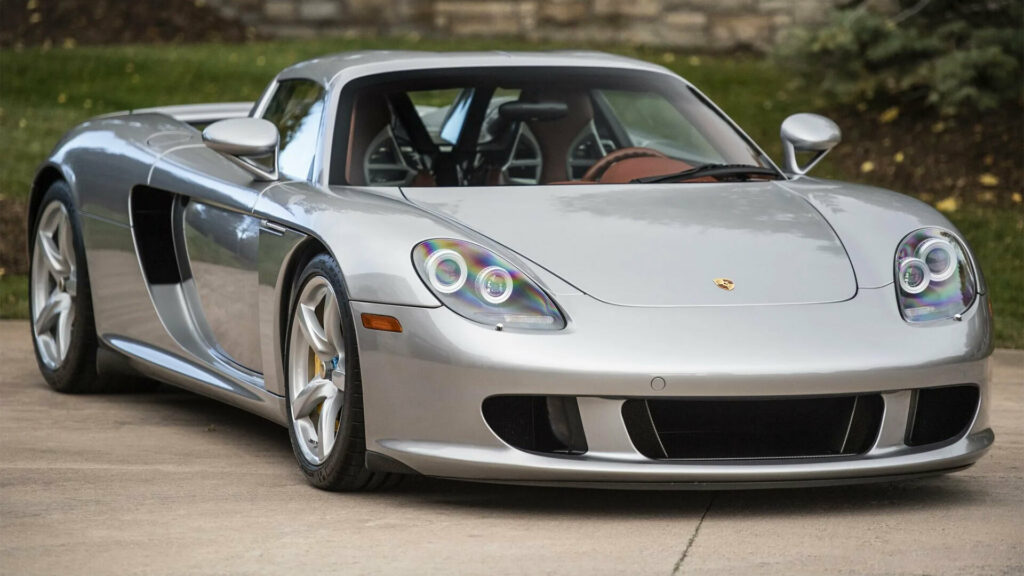
CEO John Hennessey said last summer that Deep Space’s on-hold status meant it was now developing a new hypercar to take over when the Venom F5 finishes its production run, but claimed it would be a very different kind of car. Something “visceral and analog” with a manual transmission and maybe even a naturally aspirated engine. Something along the line of the Porsche Carrera GT – which ironically might appeal to Carrera GT owners whose V10 supercars are currently parked on Porsche’s orders due to a recall with no available fix.
“The F5 was so singularly focused on doing one thing and doing it very, very, very well, and that is it kind of kicked off the race to 300 [mph] (483 kmh),” Malinick says. “For the next car that will not be the mission, and so by definition, a lot of things will change on what we’re doing next. We want to build a car that the F5 could not have been and vice versa. But it will absolutely be a hypercar in terms of its capabilities.”
EV hypercars like the Rimac are no threat
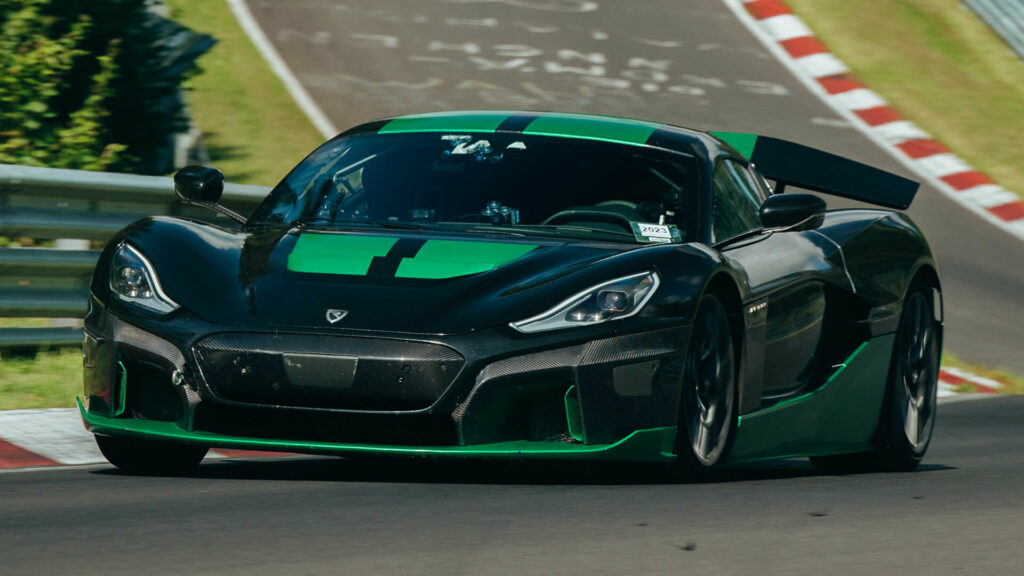
If Hennessey is going the analog route, that would explain why Malinick isn’t concerned about his company’s next combustion hypercar being outperformed by an EV.
“We’re not looking at the EV competitors, really. There’s plenty of room for everybody,” he says. “If anything the arrival of electric supercars has crystallized for us a path forward in terms of what we’re hearing from our customers and from potential customers, which is we want something that engages all of our senses. We want the the noise, we want the smell. We want the sensation of speed that’s associated with, you know, a gear shift, or hitting a certain RPM.”
The F5 Revolution exists because of one customer’s backyard racetrack
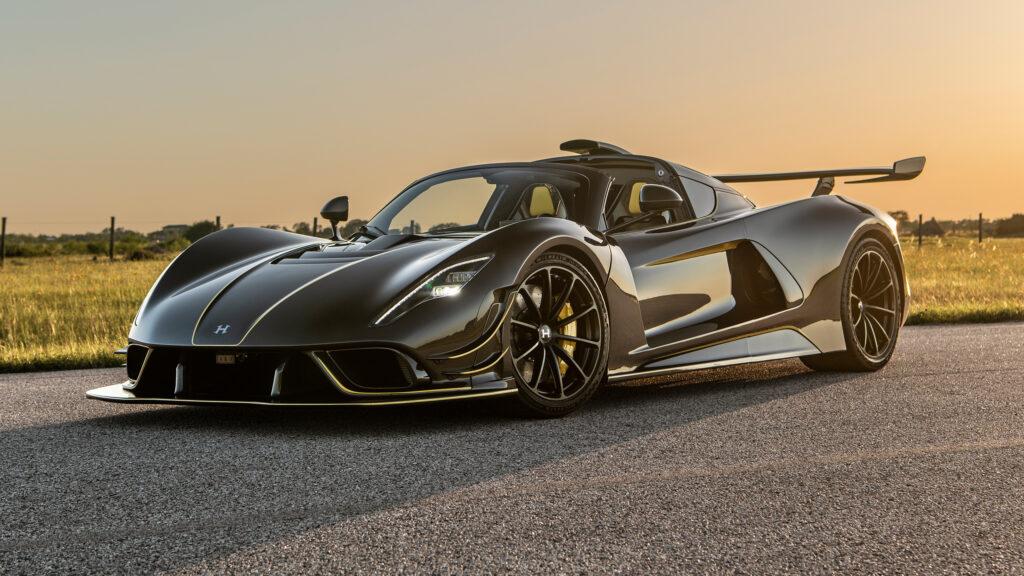
Last year was a big year for Hennessey, which followed the Venom F5 hypercar up with the even more hardcore coupe and Roadster versions, each equipped with aero and chassis mods designed to make it faster in the twisty bits, and not just down a runway. The company is building 24 Revolution coupes and 12 Revolution Roadsters, but the project only exists because of one man, and it isn’t John Hennessey.
“The F5 Revolution came about because we have an incredible customer who built his own racetrack that’s honestly nicer than the Circuit of the Americas,” Malinick says. “He said, ‘hey, I love the F5, but I kind of have a little track in my backyard. Can you, uh, can you build something with a little more downforce for me?’ And so we we said, ‘sure, we can do that.’”
This generous customer, who is based in the U.S., though Malinick declines to reveal where, even lets the company carry out development work on his track. And with the appointment last year of Brian Jones from Multimatic, formerly an engineer on the AMG One and Ford GT supercar programs, and Le Mans winner David Donahue, Hennessey now has the right manpower to make use of those opportunities and give both its modified cars and special vehicles more ability and credibility.
Also adding to the credibility, if all goes to plan, will be a new lap record at an unnamed American track and a verified assault on 300 mph (483 kmh) by the F5. Sounds like Malinick’s background in the aerospace sector (he previously worked for private jet firm Embraer) will come in handy.
“EVs are harder to tune but we can still make them more desirable”
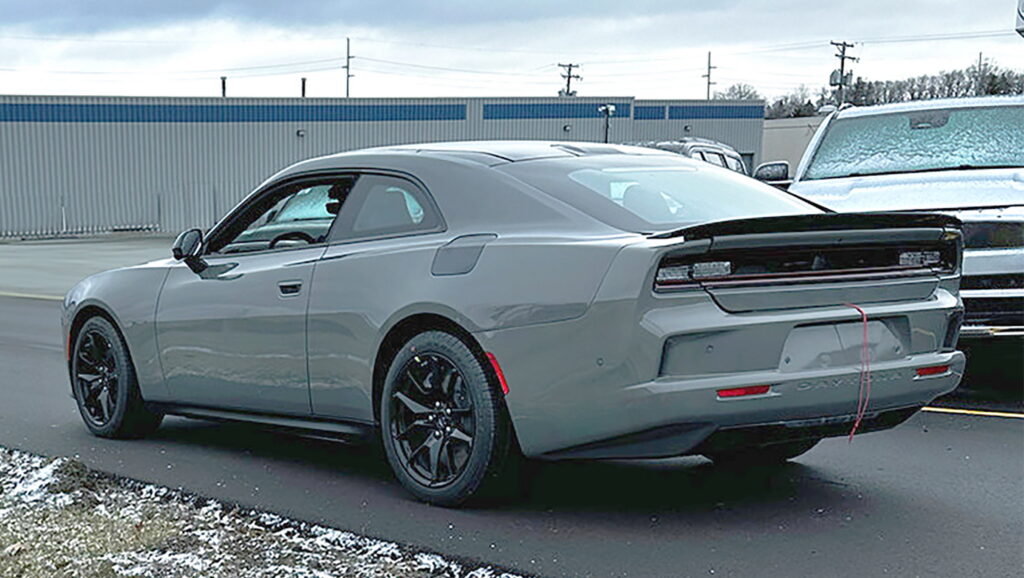
Related: 2025 Dodge Charger EV Revealed In Near Production Form
It’s clear from talking to Malinick that both Hennessey and its customers feel there’s plenty of life left in combustion engines. But while the Special Vehicles arm might be able to choose ICE power, the fact that an increasing number of drivers are choosing EVs, surely means the Hennessey Performance tuning division will have to embrace electrified products?
“No matter what is being used to power the vehicle, we’re still in the business of creating desirability and entertaining our customers,” Malinick says. “And it when you think about creating desirability, it doesn’t necessarily have to mean that we’ve taken a Tesla Plaid and doubling its horsepower. It just means that we have to get creative. But that’s kind of what the business has been doing for the past 32 years. And it’s why we’ll always pivot and do whatever we need to do. Right now though, among our customers, there’s more enthusiasm and passion for combustion engines than there’s ever been.”
How about a Hennessey Cybertruck 6X6?
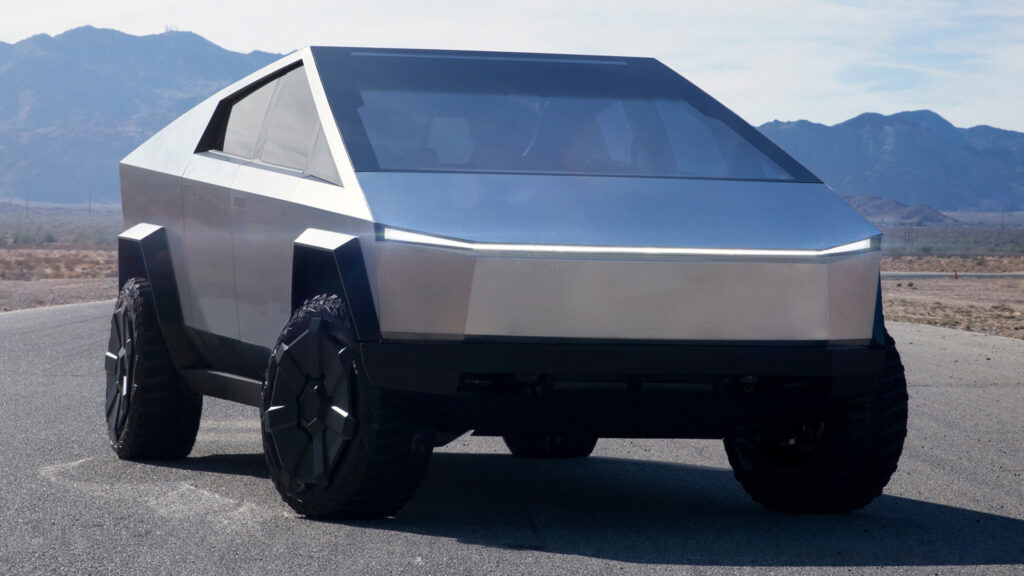
One thing we were curious to discover from someone like Malinick with a professional designer’s background is what he thinks of the hottest vehicle of the moment, the Tesla Cybertruck. Certain respected designers, including Peter Stevens of McLaren F1 fame, have slated the design, but Malinick takes a very different stance.
“I happen to love the Cybertruck,” Malinick enthuses. “I thinks that’s just my personality, I like things that go against the grain and I think it’s revolutionary and something we really needed in the industry. Even the way it’s constructed, not using the ladder chassis that other big trucks are still using, shows how bold Tesla has been, and that it hasn’t been worried about what people might say.”
That more complicated unitary construction and the stainless steel panels means we probably won’t see one of Hennessey’s crazy 6×6 conversions based on the Tesla. But Malinick’s “no comment” rather than outright denial when asked whether the Texas crew is working on a regular upgrade kit for the Cybertruck, and his assertion that the Hennessey team are “big fans” of the Tesla, suggests we might get to see a modded version of the EV hauler at some point during 2024. Let’s face it, the truck is such a big deal, it can’t afford not to jump on the trend.
But with new engineering talent and a new hypercar on the horizon that will be closer in spirit to Gordon Murrary’s T50 than a Rimac Nevera, Hennessey has set its sights on becoming a big deal, too. Texas is a huge state, but it sounds like the F5’s replacement might really put it on the map .












